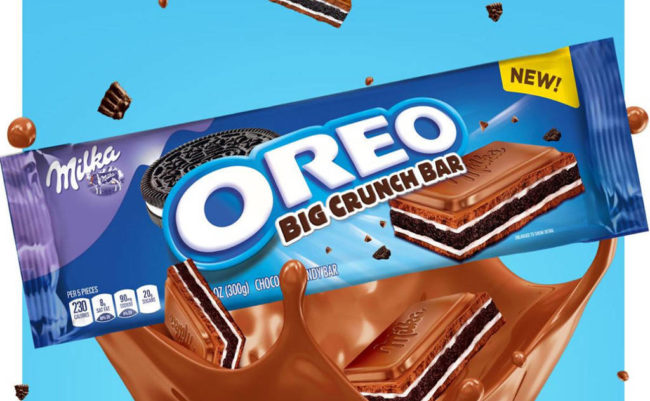
Milka and Oreo: A Debatable Combination
Some brand combinations make a lot of sense. The Intel brand has long been a good fit with Dell; Cruise giant Carnival is a reasonable partner with the Houston Texans; Lufthansa works with German luxury luggage brand Rimowa. When I managed Bulls-Eye BBQ Sauce, we partnered with Burger King on a BBQ Burger. All of these pairings have a general sense of fit.
Other brand combinations are a bit more of a stretch. The brands go together, but the connection isn’t perfect. For example, the combination of the Ford Escape and Eddie Bauer always struck me as an odd pairing.
Then there are brand partnerships that just don’t work. The linkage makes little sense and, in some cases, damages the brands.
I put the new Milka Oreo Big Crunch candy bar into this unfortunate category of bad branding moves.
Milka: A Premium Brand
Milka is a quality brand of chocolate. It dates back to 1901, when it was first produced in Switzerland. For the past century, most of the production has been in Germany, a country known for its confections. The brand has excellent quality perceptions; it is a premium European chocolate. The brand’s positioning is also clear: Milka is the world’s most tender chocolate, made with Alpine milk.
Milka has positive brand associations, it is premium, special and unique. It might not be exactly healthy, but it conveys a sense of purity. It seems like a natural product. If I studied the ingredient label, I would expect to find few ingredients, and those listed would be words I understand. This is indeed the case; you can see the ingredients here.
Oreo: A Fun Brand
Oreo is a very different type of brand. It is tasty and fun with mainstream pricing. It is neither premium nor European, and it is anything but natural. I would expect Oreo to have a long list of ingredients, including a lot of stabilizers and preservatives. And oil. Lots of oil. It does; you can see the ingredients here.
I have nothing against Oreos, I should note. I enjoy an Oreo cookie as much as the next person. Saturated fats are delicious.
The Combination: A Problem
Combining these two very different brands is a bad idea.
I understand the logic. These are two appealing brands. When you combine the wonderful crunch of Oreo and the creamy Alpine chocolate of Milka, you probably get something delicious.
The idea might test well. It might even sell well.
Nonetheless, the pairing is a problem. Why would anyone want to combine an elegant, premium brand like Milka with a processed food like Oreo? It isn’t going to help the Milka brand in the long run. It will simply damage the perceptions. It also isn’t going to help Oreo; it may create confusion.
The combination might also hurt this new product. A Milka Oreo Big Crunch candy bar will be expensive, correct? A bit like Milka.
So why does this product exist? The answer is simple: food giant Mondelez owns both brands, and the company is struggling to build revenues. This is particularly a problem because investment bankers created the company to be a high-growth enterprise. People speculate that Mondelez will soon be acquired by Kraft Heinz.
When you are desperate, you make bad branding decisions. This is one of them.
The great branding challenge is that building a strong brand is a long-term task. There is always the temptation to focus on the short-run, even if doing so will damage your brand.
The next session of Kellogg on Branding is May 7 to 12. It is shaping up to be a terrific week. Sign up to learn how to create and manage great brands. You can learn more here.
Comments RSS Feed